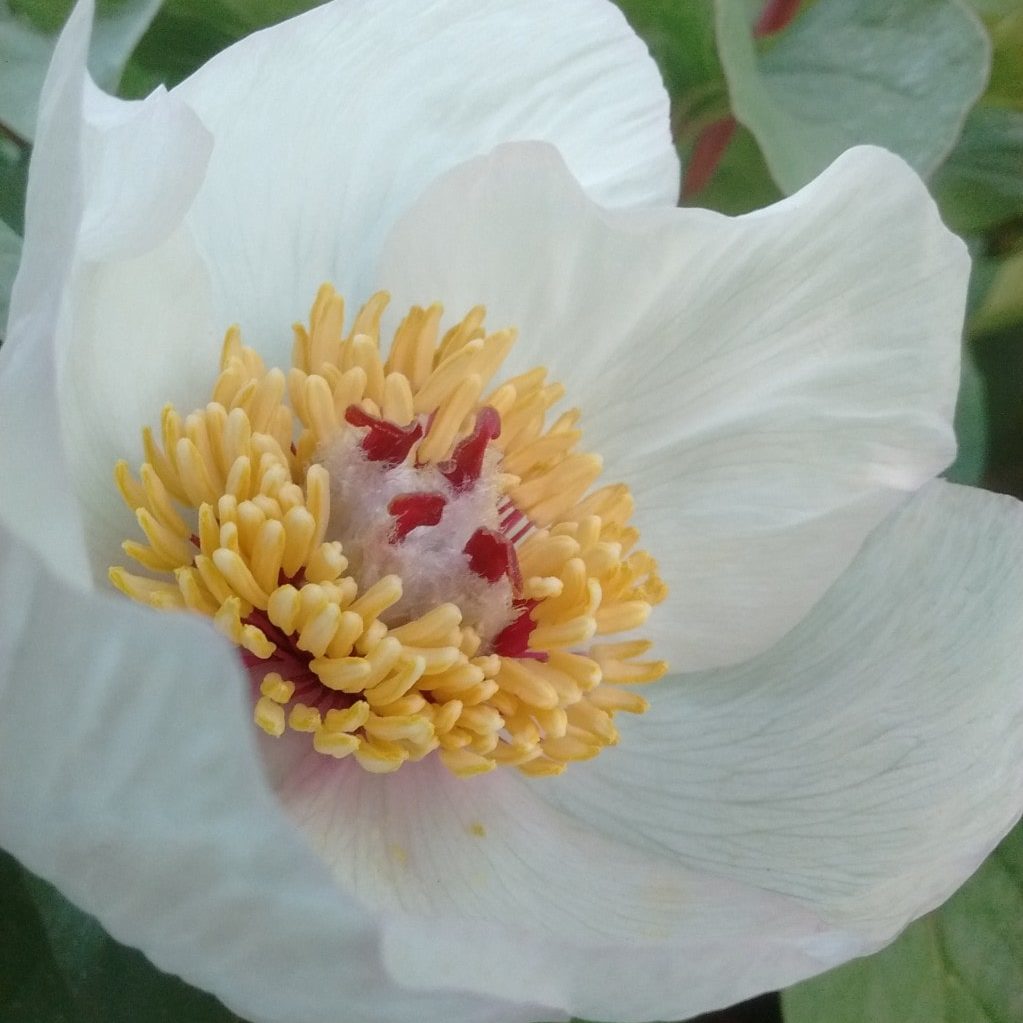Recent correspondence between Henry Chotkowski and Don Hollingsworth
Don, great to hear from you. I talked to a couple of plant people from the U of Arkansas at our open house this Mother’s Day, one whose main focus was stem berries, especially blackberries and raspberries. Her thoughts were to bred for resistance to late freezes that kill plants ovaries when they are most vulnerable. She rattled off how some plant families, species (more so edibles for commercial reasons, than anything else) that have been hybridized and selected for lower temperature thresholds for successful fruit/seed bearing. Lowering that threshold by one or two degrees could make a big difference for peonies; I know from a serious observation the past 20 years of the spring peony seasons here in the lower Midwest (northwest Arkansas) that a couple degrees up or down, in concert possible with their duration, can be the difference between what use to be a normal blooming year and another year of disappointment. So, prettier flowers, earlier doubles, stronger more rigid stems, all fine and good, but secondary to battling the coming more intemperate springs due to global warming.
Don’s response: Early on I grew a range of the Saunders hybrids, descendants of his crosses between natural peony species and Lactifloras, eventually selecting with emphasis on advanced generation hybrids for fertility. And this approach much benefitted by my long association with Chris Laning, who planted quantities of advanced generation hybrids seeds and had the results taking up acres. He claimed to have emphasized the Saunders Quads and Silver Dawn descendants. Pretty soon I noticed Roselette of the Saunders Triples definitely showed tolerance to late freezes – you may remember seeing its flowers when we were the 2007 APS convention tour on May 17. Many Happy Returns had just come into flower, first of the peonies which looked normal after those six nights of +/- 20 degrees in early April. Roselette flowers which had been covered from direct sun while frozen, protected under its frozen leaves, were not injured. That kind of observations inspired me to begin thinking about genetic resistance probability in some of its species ancestry. It was an easy step to realize those southern European species which survived in the Mediterranean mountains after the Ice Age might need that to have still be here in the 20th century. That climate has the reputation of running out of water when the snow has finished melting and would need to mature viable seeds at least some years. I note in some of those species the shoots come out of the ground with flower buds big as my finger nail, consistent with the need to get seeds matured early in the summer season. In those species genomes is where one might expect to find genetic resistant to bud damage from early spring cold events. In contrast, Lactiflora cvs., I am thinking,demonstrate a different genetic strategy, the avoidance of late freeze risk by the flower buds developing much later in the advancement of shoot growth. Following from this thinking has guided my choices of which seedlings to save pending future crosses in the search for Lactiflora elements of doubling, which also include the earlier flowering season and flower colors from the Southern European native species. Progress here has been slow compared to what one could achieve if there was nothing else to be done, but what I am seeing now is personally rewarding. on I grew a range of the Saunders hybrids, descendants of his crosses between natural peony species and Lactifloras, eventually selecting with emphasis on advanced generation hybrids for fertility. And this approach much benefitted by my long association with Chris Laning, who planted quantities of advanced generation hybrids seeds and had the results taking up acres. He claimed to have emphasized the Saunders Quads and Silver Dawn descendants. Pretty soon I noticed Roselette of the Saunders Triples definitely showed tolerance to late freezes – you may remember seeing its flowers when we were the 2007 APS convention tour on May 17. Many Happy Returns had just come into flower, first of the peonies which looked normal after those six nights of +/- 20 degrees in early April. Roselette flowers which had been covered from direct sun while frozen, protected under its frozen leaves, were not injured. That kind of observations inspired me to begin thinking about genetic resistance probability in some of its species ancestry. It was an easy step to realize those southern European species which survived in the Mediterranean mountains after the Ice Age might need that to have still be here in the 20th century. That climate has the reputation of running out of water when the snow has finished melting and would need to mature viable seeds at least some years. I note in some of those species the shoots come out of the ground with flower buds big as my finger nail, consistent with the need to get seeds matured early in the summer season. In those species genomes is where one might expect to find genetic resistant to bud damage from early spring cold events. In contrast, Lactiflora cvs., I am thinking,demonstrate a different genetic strategy, the avoidance of late freeze risk by the flower buds developing much later in the advancement of shoot growth. Following from this thinking has guided my choices of which seedlings to save pending future crosses in the search for Lactiflora elements of doubling, which also include the earlier flowering season and flower colors from the Southern European native species. Progress here has been slow compared to what one could achieve if there was nothing else to be done, but what I am seeing now is personally rewarding






